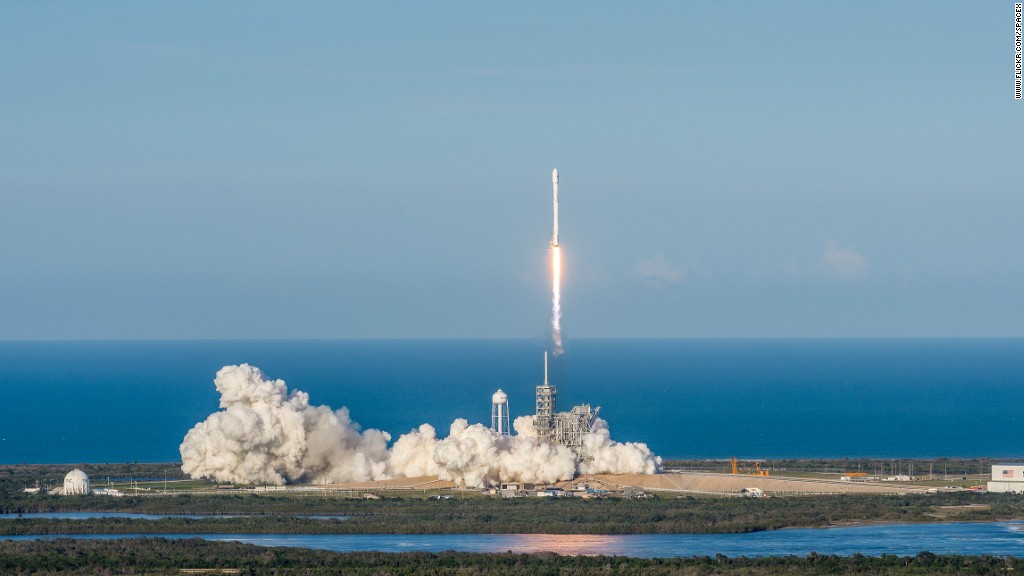
SpaceX just kicked off this weekend's rocket launch double feature.
The private space company -- headed by Tesla (TSLA) CEO Elon Musk -- blasted a communications satellite into orbit from Kennedy Space Center in Cape Canaveral, Florida.
SpaceX is slated to make another launch on Sunday.
Friday's mission marked the second time SpaceX has put a used, first-stage rocket booster back into space. The booster was previously used in a January mission.
SpaceX wants to reuse its rockets in order to drastically reduce the cost of a single launch. Recovering, refurbishing and then re-flying an orbital-class rocket is a feat no other company has accomplished. And completing a second mission with a used rocket will signal to SpaceX's customers that it can pull off the maneuver safely. That could mean more, cheaper launches with pre-flown rocket boosters.
SpaceX's playbook: Make history, then make more history
Musk says he wants to eventually reduce the cost of a launch by a factor of 100.
After Friday's launch, SpaceX was again able to safely recapture the first-stage rocket. About three minutes after liftoff, when the rocket was about 42 miles from Earth, the booster detached from the upper-stage rocket and began descending. Its on-board computer then guided it to a safe landing on a platform, or droneship, roughly the size of a football field in the Atlantic Ocean. It's unclear if SpaceX plans to fly that booster for a third time.
So far, SpaceX has safely landed first-stage rockets on land or a droneship 12 times.
Sticking the landing Friday came as a bit of a surprise to Musk. He tweeted earlier on Friday that there was a "good chance" SpaceX wouldn't successfully recover the rocket because the mission requirements meant it would have a difficult trip home.
Shortly after the landing, he said that although the rocket was safe, it was worn out from the difficult trek.
The first mission in which SpaceX used a pre-flown rocket was back in March. The mission went off without a hitch, and SpaceX even recaptured the used first-stage booster. Musk said SpaceX will give that history-making booster to the Kennedy Space Center.
Sunday's liftoff is planned at 4:25 pm ET from California's Vandenberg Air Force Base, about 160 miles north of Los Angeles.
Sunday's launch won't use a pre-flown booster. But it will carry an interesting payload: A group of satellites that will be used to help eliminate the "black zones" in tracking commercial airplanes, like the Malaysia Airlines flight which vanished somewhere over the Indian Ocean.
Ron Howard is on a mission to make science sexy
The Iridium Next satellite network will provide -- among other services -- global real-time surveillance of all flights. That means missing airplanes could become a thing of the past.
It will take a few launches to get the full network into orbit. SpaceX sent up the first 10 of these satellites in January, and Sunday's mission will deliver the second batch. Six more missions over the next year will get the full satellite constellation into orbit.

